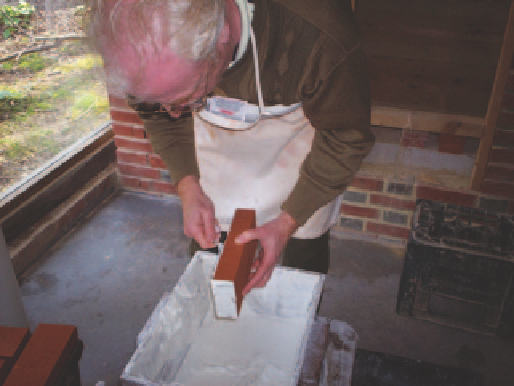Agriculture Reference
In-Depth Information
trowelled to ensure both united fully; preventing any hollows in the joints that
both weakened the brickwork and demanded unnecessary pointing-in after-
wards (see Chapter 6, Fig. 166).
Figure 134
Dip laying an ashlar
rubbing brick in
preparation for setting
into position. (Courtesy
of Gerald Edkins)
Setting, or laying, gauged work always involves dampening all surfaces being
built on, each of the dip-jointed bricks then being placed with a sliding motion
into position; a final tap with the brick hammer or rubber-headed hammer to
consolidate this process. As each of the bricks are laid a small bead of putty
should exude from the joint face (Fig. 135) and it was always considered best
practice to leave this until the joint had stiffened, to then cut it off flush with
a sharp knife as the work is initially cleaned down (Fig. 136). Any attempt to
do so when first laid would result in smearing the facework with wet mortar.
In setting each and every brick the bricklayer would be checking position and
alignment against the lines ranging from the profiles.
Figure 135
Setting the ashlar
rubbing brick into
position. (Courtesy of
Gerald Edkins)


